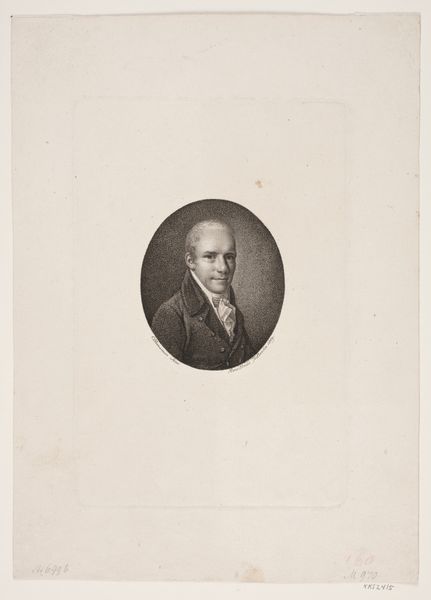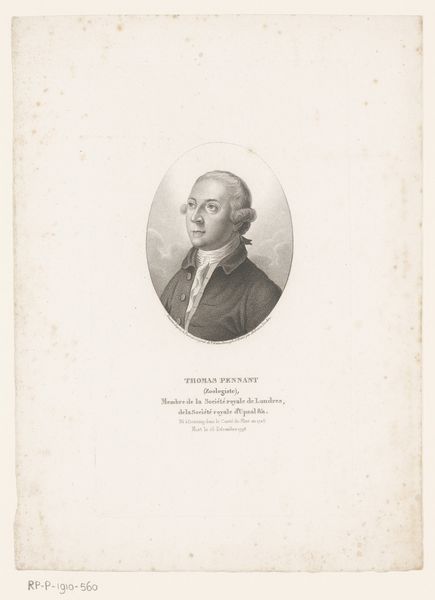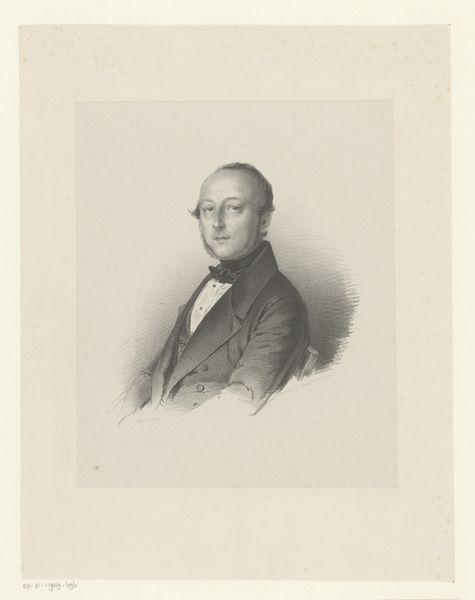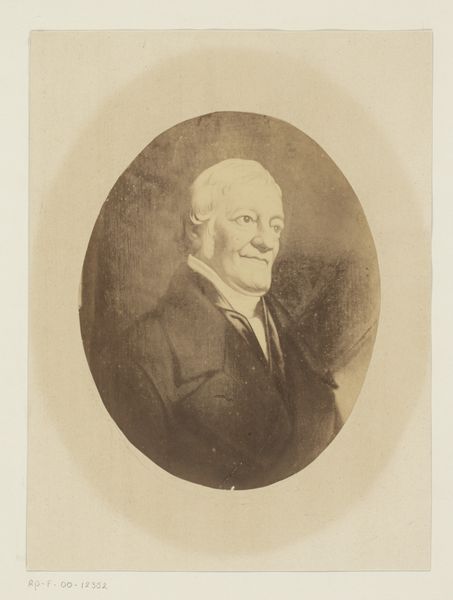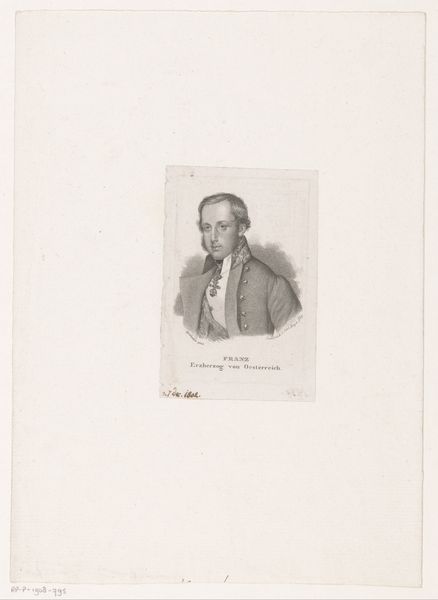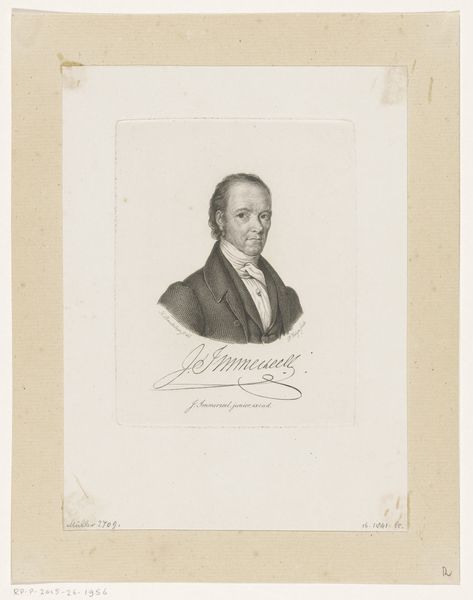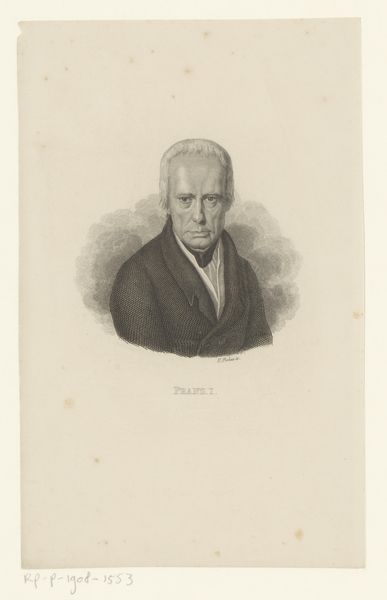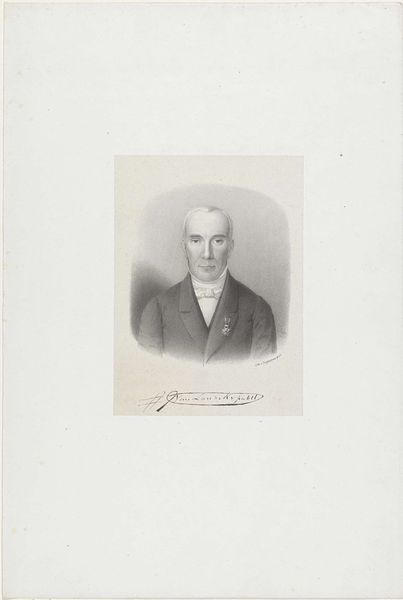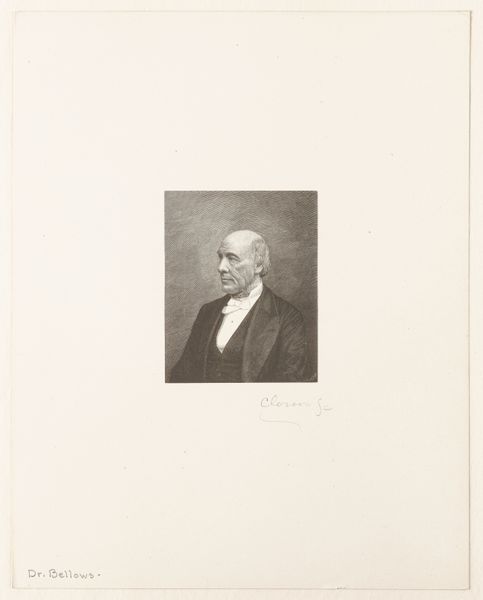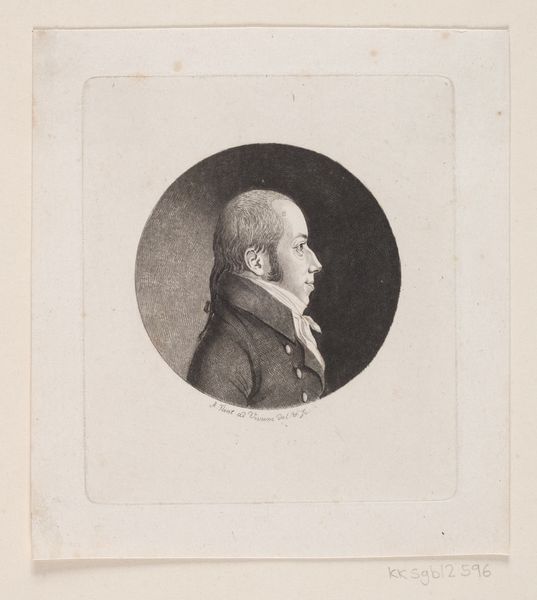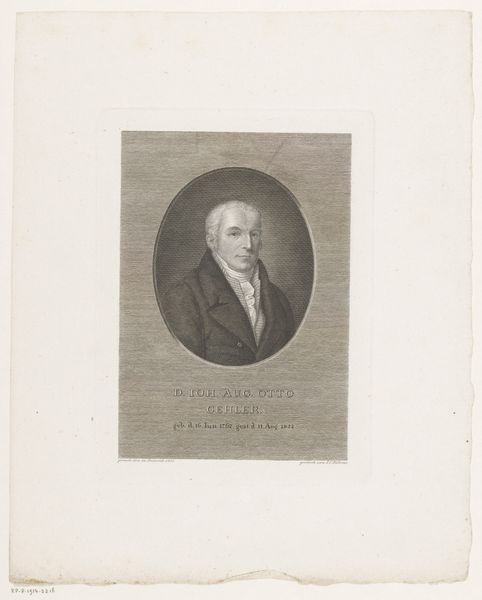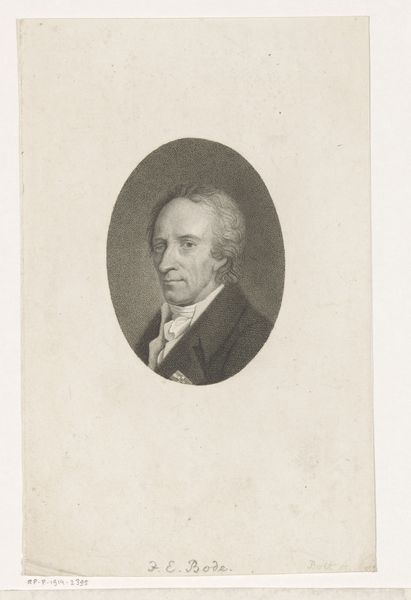
drawing, graphite
#
portrait
#
drawing
#
neoclacissism
#
light pencil work
#
historical photography
#
graphite
#
academic-art
#
realism
Dimensions: height 559 mm, width 379 mm
Copyright: Rijks Museum: Open Domain
Editor: So, this is Franciscus Bernardus Waanders' "Portret van Henricus van Roijen," made sometime between 1819 and 1880 using graphite. It's quite striking, this portrait. I’m immediately drawn to the subject's rather stern expression, and how that’s contrasted by the softness of the graphite. How do you interpret this work? Curator: This piece, for me, speaks volumes about the construction of masculinity and power during the period it was created. How does the formality of the portrait, the subject's attire, and even his gaze, contribute to a specific representation of societal authority? I would push back on what the artist may have been doing to engage the viewer with historical understanding around power, race and gender. How complicit may the portraitist have been? Editor: That's fascinating. I hadn't considered the deliberate construction of authority in that way. I was so focused on the aesthetic qualities. But I guess it makes sense when considering context. Curator: Exactly. Who was allowed to have their portrait created, and why? What messages were these portraits meant to convey, and to whom? Think about the power dynamics inherent in the act of portraying someone, particularly during a time of shifting social and political landscapes. What assumptions might be present at every stage? Editor: So it's not just about artistic skill, but also about the sitter's social standing and the message they wanted to project. I'm starting to see this portrait as a product of its time, reflecting a very specific set of values. Curator: Precisely! And remember, it is through analyzing works like these that we are able to look at representation critically and contextualize issues we face today. Editor: I never would have gotten to this level of examination by myself. I guess that is where historical study and art combine in amazing ways!
Comments
No comments
Be the first to comment and join the conversation on the ultimate creative platform.
